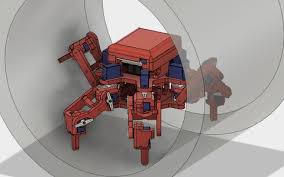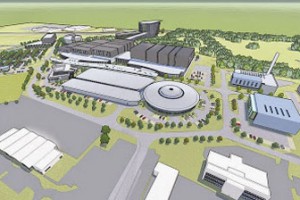
The event was organised by the EU-funded Convergent Science Network (csnetwork.eu) and was led in the UK by the University of Sheffield.
The highlight of the week, say the organisers, was a one day exhibition of “Living Machines” on 1 August that included 39 exhibits with live technology demonstrations and artworks from around the world.
The conference was co-organised by biomimetic scientists Professor Tony Prescott from the University of Sheffield and Professor Paul Verschure from University Pompeu Fabra, Barcelona.
Sheffield University wrote ahead of the event:
Cutting-edge biomimetic technology in the spotlight will include robots that move and sense like animals, with worm, insect, octopus, fish, mouse, dog, and human-like robots on display. The exhibit also includes interactive demonstrations such as a helmet with special sensing abilities for fire fighters of the future, a device that allows you to see like a chameleon, and a robot DJ who interacts with you to compose music. Biohybrid exhibits, that mix biological and artificial parts, include an emotionally-expressive robot controlled by slime mould, biohybrid clothing made with living cells, and a robot that powers itself by digesting human urine. The exhibition also features some of the latest biomimetic medical devices including new techniques for minimally-invasive surgery.
A dance performance featuring the iCub humanoid robot, live visual art and a string quartet performing music in the style of Mozart and Vivaldi, but composed by artificial intelligence, are a few examples of the engineered artistic possibilities that will be demonstrated.
The University of Sheffield has contributed multiple exhibits to the event through the Sheffield Centre for Robotics (SCentRo, jointly established with Sheffield Hallam University) including integrated exhibits on Emergence and Evolution and Nature-inspired Touch.
“The Living Machines conference is a unique opportunity for world-leading experts to explore the latest exciting innovations that the field of biomimetic and biohybrid technologies has to offer,” said Professor Tony Prescott from the University of Sheffield’s Department of Psychology.
“These technologies will have a profound effect on many different aspects of our future lives, posing important ethical questions and practical concerns that this event gives us chance to address.”
CSN is an international network of scientists and technologists interested in development of biomimetic and biohybrid systems. It is funded by the European Union through their “Future Emerging Technologies” (FET) programme.
Living Machines is an international conference series concerned with the development of future real-world technologies that depend on our understanding of the principles underlying living systems and the flow of communication signals between living and artificial systems.
A Programme for the Living Machines exhibition can be downloaded »
(Image: Konstantinos Grigoriadis – Arachnoids, source: University of Sheffield)
 Electronics Weekly Electronics Design & Components Tech News
Electronics Weekly Electronics Design & Components Tech News



